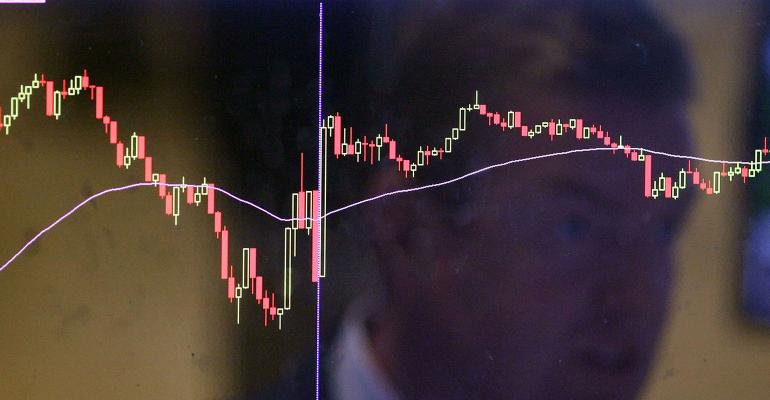(Bloomberg) -- One often-made argument in favor of stocks says investors should dive in before roughly $6 trillion of money-market cash gets redeployed into equity assets globally.
But buying the theory requires a big leap of faith — there’s significantly less out there to actually fund riskier gambles.
So say a pack of stock skeptics who, while not counseling selling out of the market, warn that some of the bull cases going around suffer from some optimistic framings.
Among them is Deborah Cunningham of Federated Hermes, who estimates that at least 80% of the nearly $1 trillion that’s poured into money-market funds since March’s financial system woes represents depositors leaving banks, rather than people waiting for entry points in equities and credit.
“It’s come through the deposit market, through the retail trade, with the likelihood of that being very sticky,” Cunningham said in a late-December interview on Bloomberg Television.
That view pours cold water on a bullish case for stocks that’s quickly gaining steam — that the breakneck rally over the past two months will be supercharged by cash coming off the sidelines. The record $5.9 trillion hoard in money-market fund represents dry powder ripe to be redeployed once central banks begin cutting rates, Barclays strategist Emmanuel Cau wrote in a note last week. UBS Asset Management floated a similar thesis in the firm’s 2024 outlook, saying that investors exiting cash in favor of risk assets “could catalyze much stronger performance” than consensus expects once short-term yields decline.
To Citi Global Wealth chief investment officer and head of investments David Bailin, there’s no reason to wait to migrate out of money-market funds and into “core 60/40 portfolios,” he said this month.
But even with the S&P 500 hovering near an all-time high, buoyed by growing conviction that the Federal Reserve will lower rates next year, money market funds continue to reliably attract fresh cash — and the source of that capital matters. Deposits were already starting to leave banks in favor of higher-yielding vehicles in the run-up to March’s banking sector turmoil as the Fed’s hiking cycle boosted rates on the shortest-dated paper. That dynamic has only intensified in the months since.
“With a lot of that cash coming from banking accounts, it’s the money that people will use to meet their regular expenses. In other words, it’s not available to move into the stock market,” said Matt Maley, chief market strategist at Miller Tabak + Co. “That doesn’t mean there won’t be some some money rotating into stocks next year, but we also have to remember that those money market account rates are still a lot more competitive than they were in 2020 and 2021.”
To that point, Federated Hermes’s Cunningham thinks money-market funds will stay competitive even as the Fed embarks on rate cuts to bring monetary policy out of restrictive territory. It’s unlikely that the Fed’s normalization process will bring interest rates back to zero, but rather to between 3% and 4%, she said. That level will keep retail investors engaged instead of returning their deposits to banks. As such, risk-free cash on the sidelines will prove sticky.
While a 3% to 4% yield is a sea-change from the era of rock-bottom rates on money-market funds, it’s inevitable that a resurgent equity market will slow the flood into cash, according to David Sowerby of Ancora Advisors.
“So much of that did come mid-March when people were worried about the banks. Banks were offering yields less than 1%, so the savvy investor in a high interest-rate world found their way into short-term paper that was yielding better than 5%,” Sowerby, portfolio manager at Ancora Advisors, said on Bloomberg Television. “That was a good story in 2023, but for the investor who wants to get a better inflation-adjusted and after-tax rate of return, it’s going to right back to the opportunities in the US equity market.”





